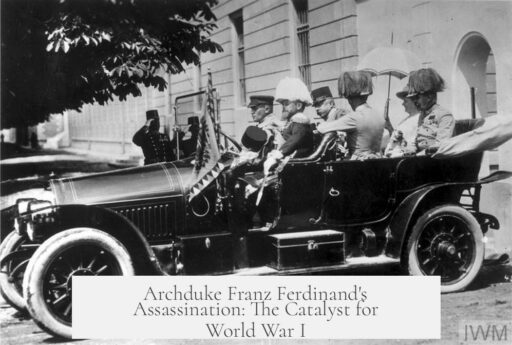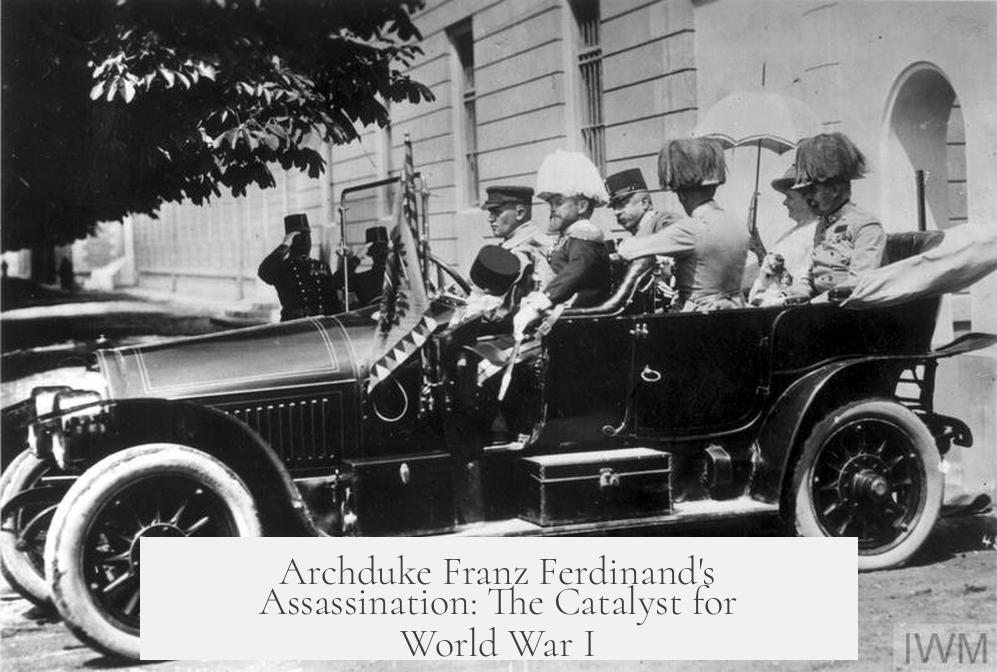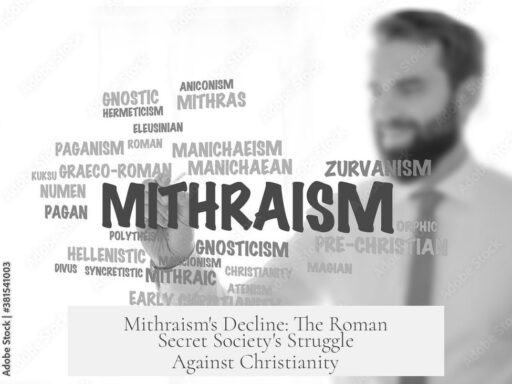Archduke Franz Ferdinand’s assassination triggered World War I by eliminating a key figure opposing war within Austria-Hungary and setting off a chain reaction of political crises and military mobilizations.
The Balkans were unstable before the assassination. Ottoman territories were breaking up, and nations like Serbia sought to expand, especially into Bosnia-Herzegovina, a region controlled by Austria-Hungary but populated largely by Serbs. Serbia supported revolutionary groups aiming to unite these Slavic peoples. Austria-Hungary faced internal tensions, balancing control between Vienna and Hungary, where nationalism was rising. Franz Ferdinand sought to calm this by proposing a new Slavic state loyal to the empire to counter Hungarian influence and Serbian aggression. He aimed to avoid war, promoting reforms and military strength to preserve stability.
The assassination on June 28, 1914, removed this moderate and peace-oriented leader. Serbian nationalists’ successful attack eliminated the strongest internal opponent of war in the Austro-Hungarian leadership. This event gave pro-war factions the opportunity and justification they had sought for military action against Serbia.
Following the assassination, Austria-Hungary launched the July Crisis, marked by diplomatic tension and brinkmanship. The empire delivered an ultimatum to Serbia on July 24 with strict demands designed to be mostly unacceptable, yet presented as diplomatic. Serbia responded by accepting most but not all terms on July 26. However, Austria-Hungary, supported by Germany, proceeded toward war regardless.
Russia, allied with Serbia and opposed to Austrian expansion, placed its army on alert on July 25 and started mobilizing secretly. Russia’s mobilization was a protective move and a warning to Austria-Hungary and Germany. Germany anticipated a two-front war with Russia and France and viewed the situation as an opportunity to act pre-emptively. Germany’s military strategy—the Schlieffen Plan—involved quickly defeating France before turning to Russia, requiring immediate mobilization and offensive actions.
- July 28: Austria-Hungary declared war on Serbia.
- July 30-31: Russia ordered partial then general mobilization.
- August 1: Germany declared war on Russia and France, invading Belgium and Luxembourg.
- August 4: Britain declared war on Germany due to the violation of Belgium’s neutrality.
- August 6: Austria-Hungary declared war on Russia, completing the alliance-driven escalation.
France, allied with Russia and wary of Germany’s power after the Franco-Prussian War, supported Russia’s stance but had limited initiative in the crisis. Britain was initially hesitant, focusing on internal issues like Irish unrest. Britain tried to mediate but failed to prevent war.
The intricate web of alliances, national ambitions, and military plans turned a regional conflict into a full-scale global war. Austria-Hungary’s decision to attack Serbia after the assassination, backed by Germany’s strategic calculations, prompted Russian intervention. The dance of mobilizations and declarations quickly involved multiple great powers. Once Germany invaded neutral Belgium, Britain entered the war, transforming a Balkan dispute into World War I.
The assassination did not cause the war alone but provided the catalyst and pretext needed to unleash underlying tensions. Franz Ferdinand’s death removed an internal advocate for restraint and reform, allowing hardline and militaristic elements within Austria-Hungary to push for war. The crisis escalated swiftly because of mutual defense agreements, nationalist ambitions, and military timetables, culminating in a devastating conflict.
Key takeaways:
- Franz Ferdinand’s assassination removed a moderate opposing war in Austria-Hungary.
- The Austro-Hungarian empire used the murder as a pretext for war against Serbia.
- Russia’s defense of Serbia triggered mobilization and alliances’ activation.
- Germany’s military plans and alliances escalated the conflict rapidly.
- Through a chain of ultimatums, mobilizations, and invasions, the assassination sparked a general European war.
How did Archduke Franz Ferdinand’s assassination start World War I?
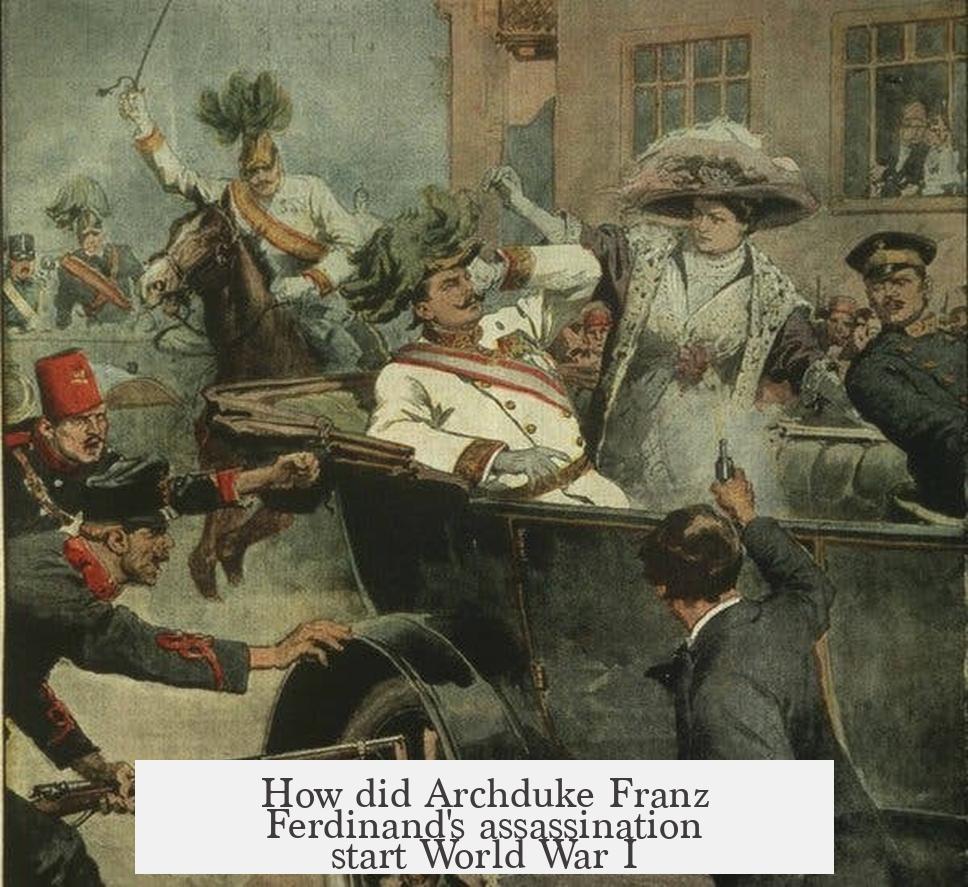
The assassination of Archduke Franz Ferdinand set off a chain reaction that ignited the powder keg of Europe, plunging the continent into World War I. But this wasn’t just a simple act of violence; it was a spark in a region already simmering with tension, political instability, and tangled alliances. Let’s untangle the threads and explore how one bullet in Sarajevo could trigger a global war.
Imagine Europe in the early 20th century—a place where empires teeter, new nations tussle for territory, and nationalist fervor bubbles like soda left open too long. Now, let’s dive into the background stage for this historic drama.
Balkan Turmoil: A Powder Keg Ready to Explode
The Balkans are Europe’s equivalent of a family reunion gone wrong. Former Ottoman lands had turned into a stew of new nations like Serbia and Bulgaria, each hungry for more territory. The First Balkan War (1912) ripped away most of the Ottoman influence, but that just set the stage for the Second Balkan War (1913), where former allies turned against each other over who got which slice of the pie.
Then there’s Bosnia-Herzegovina, a region caught between big powers. It was officially part of the Ottoman Empire but under Austro-Hungarian control since 1878 and fully annexed in 1908. Many Bosnians identified as Serbian, and the Kingdom of Serbia openly supported revolutionary groups there, dreaming of uniting all Serbs under one flag. Austria-Hungary saw this like a ticking time bomb at their doorstep.
Inside Austro-Hungary: A Fractured Empire Held Together by a Thread
The Austro-Hungarian Empire was a patchwork quilt with a tendency to unravel. The 1867 power-sharing deal split authority between Vienna and Budapest, much to the worry of Austrian politicians. Hungary had its own military and foreign affairs ambitions, stirring nationalism and militarism inside the empire.
Archduke Franz Ferdinand, heir to the throne, had a more complicated vision. Often misunderstood, he was actually a reformist. His big idea was to create a “Southern Slavonia” — a new Slavic state within the empire composed of Slovenia, Croatia, and Bosnia. This would balance Hungarian power and hopefully contain Serbia’s expansion. Ironically, Franz Ferdinand wanted to avoid war. He knew the region was a tinderbox.
The Assassination: Taking Out the Main Peacemaker
Enter Gavrilo Princip, a Bosnian Serb nationalist. On June 28, 1914, Princip shot the Archduke and his wife in Sarajevo. This assassination wasn’t just a tragic moment; it removed the empire’s main opponent to war, the man trying to hold the empire’s patchwork together peacefully.
Without Franz Ferdinand, the pro-war faction inside Austria-Hungary found their golden ticket to push for conflict. The assassination gave them a seemingly justified reason to act against Serbia.
The July Crisis: Diplomacy Falls Apart Fast
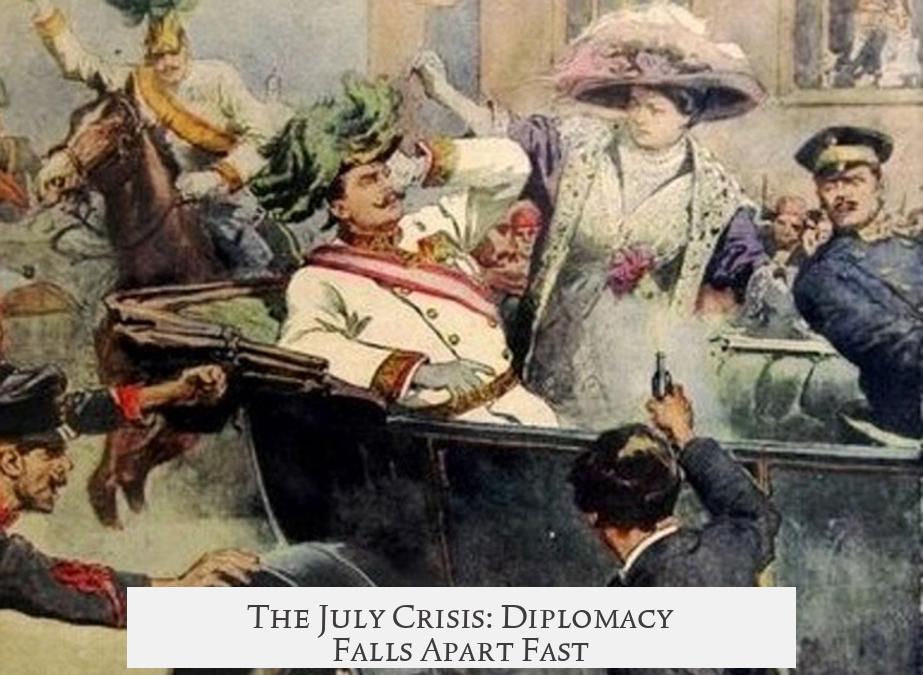
What followed was a tense month known as the July Crisis—a dizzying dance of ultimatums, military mobilizations, and diplomatic bluffing. Austria-Hungary issued a nearly impossible ultimatum to Serbia on July 24. Serbia agreed to most demands by July 26, but internal German politics threw a wrench in the works, turning what might have been a diplomatic victory into a stepping stone to war.
Austria-Hungary declared war on Serbia on July 28. Russia, Serbia’s big brother in the region, put its army on alert July 25 and secretly began mobilizing around a million soldiers. This forced Germany’s hand—they faced the nightmare of a two-front war against Russia and France.
Alliances Drag Europe into the Abyss
| Country | Action | Reason |
|---|---|---|
| Russia | Mobilizes army in defense of Serbia | Serbia is its ally; losing it weakens Russia’s influence in Balkans |
| Germany | Mobilizes and declares war on Russia and France | Plans to avoid two-front war by using Schlieffen Plan: attack France quickly |
| France | Mobilizes; supports Russia | Alliance with Russia; desire to reclaim prestige after 1870 defeat |
| Britain | Declares war on Germany after invasion of Belgium | Obliged by treaty to protect Belgian neutrality; attempts at mediation fail |
| Austria-Hungary | Declares war on Serbia and later on Russia | Wants to punish Serbia and assert dominance in Balkans |
The intricate web of alliances was a recipe for disaster. Germany, fearing the strategic nightmare of a two-front war, pushed forward with the Schlieffen Plan— a fast strike to eliminate France before facing Russia. France, still bitter from its defeat in the Franco-Prussian War, fully backed Russia.
Britain, less eager to jump into a continental brawl, hoped for mediation. But Germany’s invasion of neutral Belgium on August 4 broke diplomatic protocols and pushed Britain to declare war. In less than two weeks after the assassination, Europe had plunged fully into conflict.
Timeline of Key Events
- June 28, 1914: Archduke Franz Ferdinand assassinated in Sarajevo.
- July 24: Austria-Hungary delivers an ultimatum to Serbia.
- July 25: Russia alerts its army, begins secret mobilization.
- July 26: Serbia agrees to most ultimatum demands.
- July 28: Austria-Hungary declares war on Serbia.
- July 30: Russia orders partial then general mobilization.
- July 31 – August 1: Germany issues ultimatum to Russia, mobilizes and declares war on Russia and France, invades Luxembourg and Belgium.
- August 4: Germany declares war on Belgium; Britain declares war on Germany.
- August 6: Austria-Hungary declares war on Russia.
What Does This Teach Us?
The assassination itself was a trigger, yes, but the war’s true cause was complex. It’s like lighting the match for a fire already burning under dry wood. Longstanding nationalist tensions, empire instability, and tangled alliance commitments created a scenario where a single violent act spiraled quickly out of control.
Think about it: without Franz Ferdinand’s assassination, would war have erupted anyway? Possibly. His death removed a significant advocate for peace and reform. The pro-war factions in Austria-Hungary seized the moment to push their agenda, making war virtually inevitable.
Millennia of history show us how fragile peace can be when national pride, fear, and strategic miscalculation mix. This episode is a cautionary tale about how closely intertwined diplomacy and military strategy are—and how quickly they can unravel when even one key figure is lost.
Looking Back With Benefit of Hindsight
Here’s a practical tip for today’s world leaders and diplomats: do not underestimate the power of moderate voices like Archduke Franz Ferdinand, especially when tensions run high. Their efforts at compromise and reform may look slow and cumbersome, but once silenced, extremes gain ground.
Also, coalitions and alliances demand transparency and communication. The attempts at deception and misdirection during the July Crisis only fueled panic and miscalculation. Transparent diplomacy could have averted disaster.
So, the next time you hear about a “shot heard around the world,” remember it’s more than a cliché. It encapsulates a volatile mix of regional strife, great power rivalries, and the tragic removal of a key peacemaker. In 1914, just one tragic act unraveled decades of fragile peace and launched the world into a devastating conflict.
How different might history have been if Franz Ferdinand had lived? That question still haunts historians, reminding us how history’s course often hinges on moments both pivotal and personal.
1. How did Archduke Franz Ferdinand’s assassination remove a key obstacle to war?
Franz Ferdinand was the main opponent of war in Austro-Hungarian leadership. His death removed a powerful anti-war figure who favored reform and diplomacy, clearing the way for pro-war factions to push for conflict with Serbia.
2. Why did Austria-Hungary decide to go to war after the assassination?
The empire had wanted war with Serbia for some time. The assassination provided a justification to act on this desire. Austria-Hungary issued an ultimatum to Serbia, using the event as a pretext to launch military action.
3. How did the assassination trigger a chain reaction among European powers?
Austria-Hungary’s declaration of war on Serbia activated alliances. Russia supported Serbia and mobilized its army. Germany backed Austria-Hungary and planned a quick attack on France. France and Britain were drawn in, escalating the conflict.
4. What role did diplomatic failures play in escalating the crisis?
Diplomatic talks after the assassination were marked by miscalculations and distrust. Austria-Hungary’s harsh ultimatum, combined with secret mobilizations and alliance commitments, led to rapid escalation instead of peaceful resolution.
5. How did the unstable Balkans and Austro-Hungarian politics set the stage for war?
The Balkans were a region of conflict with competing nationalisms. Austria-Hungary itself was unstable, with tensions between different ethnic groups and political factions. Franz Ferdinand’s plans threatened existing power balances, adding to the tension.
